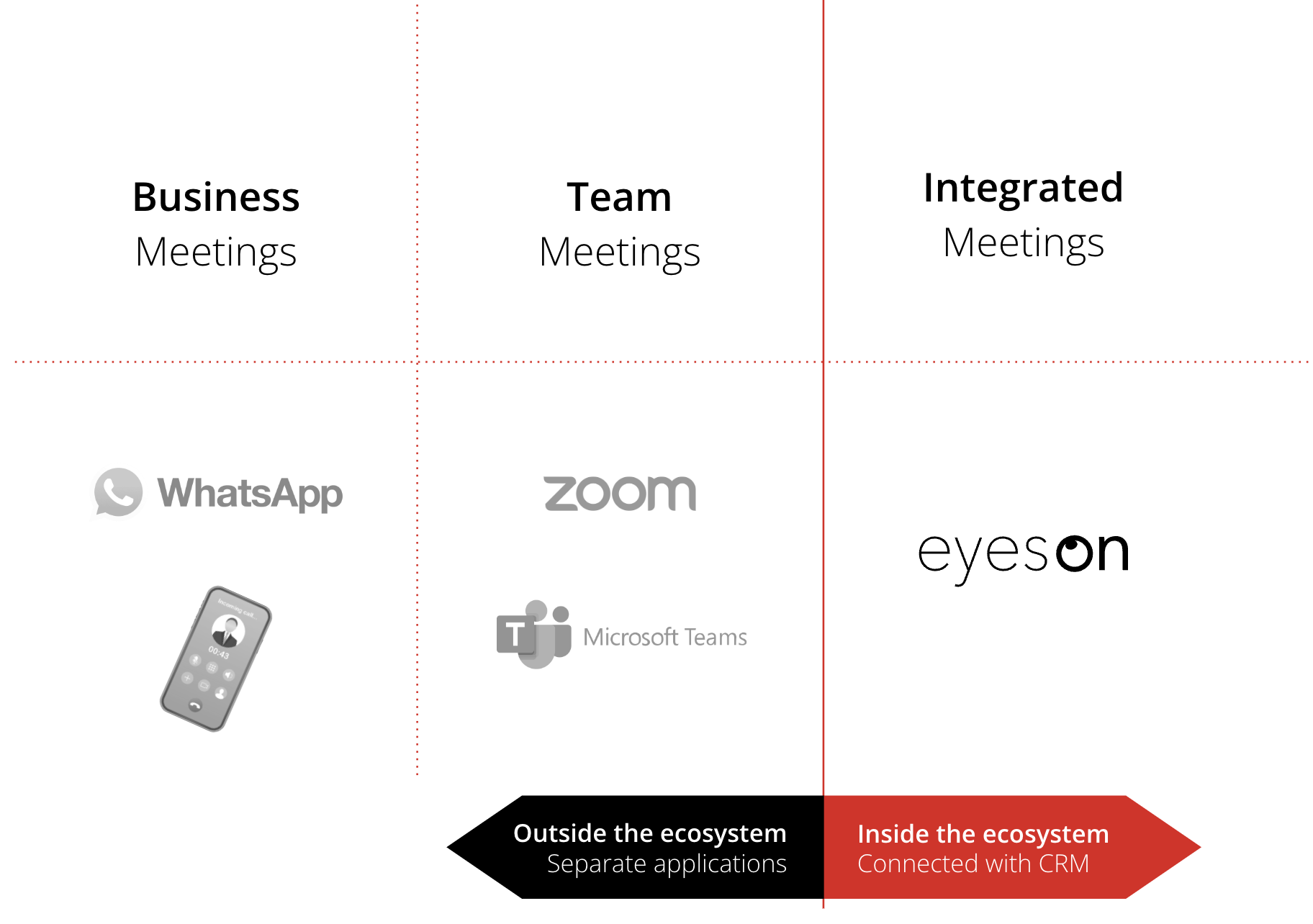The Future of Video Communication

Video Communication is a New Standard
Behind the Graz-based start-up is Andreas Kröpfl, founder and CEO of Eyeson. Kröpfl studied computer engineering before joining Frequentis in 1999, where he gained experience in the field of video and security communication. Together with Michael Wolfgang, he founded his own company in 2010. The aim was the redefinition of video communication. "The first two years were really hard," Kröpfl remembers, "we financed the company exclusively from our savings and also invested our salary back into Eyeson." The first investors came on board in 2012, and Visocon was renamed Eyeson in 2017.
Stand-alone communication like with Zoom is a waste of time.
Although Kröpfl is confident that Eyeson will one day overtake Zoom as the frontrunner, the two companies are not (yet) in direct competition. Due to the fact that the Graz-based start-up offers an API (short for application programming interface) that enables companies to quickly and easily integrate Eyeson's video communication software into their own products.
For example, a doctor can offer his patients online help and hold video meetings with them without the customer having to leave the doctor's website or download an external program – the video call is integrated into the service. Because, according to Kröpfl, communication only makes sense if it is also integrated into business processes. "Stand-alone communication like with Zoom is a waste of time," says the Eyeson CEO.
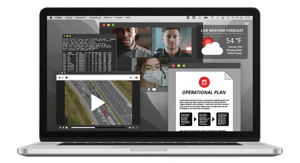
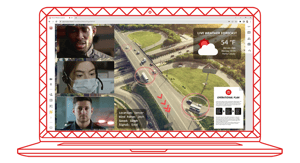
Technologically, Eyeson stands out from the competition ...
The Eyeson API includes standard features such as a chat, recording meetings or setting a digital background. But thanks to an infinite number of video stream layouts, every meeting with Eyeson can be personalized quickly and easily. The focus can be set exactly on the relevant participants or data.
Our unique technology results in so many use cases.
"Our unique technology results in so many use cases," says Kröpfl and describes a possible scenario from security communication: During a police operation, the video of a drone and a map with the position of the emergency services could be displayed in the headquarters. The head of operations coordinates the operation from headquarters and receives additional input from his team.
There is also potential in the gaming sector. With Eyeson, multiple players can share their gameplay so it's visible to all; every gamer can see the screen of all other players. Especially in the gaming sector, the advantages of single-stream technology can be felt: Since Eyeson requires little computing power, the gaming experience remains fluid.
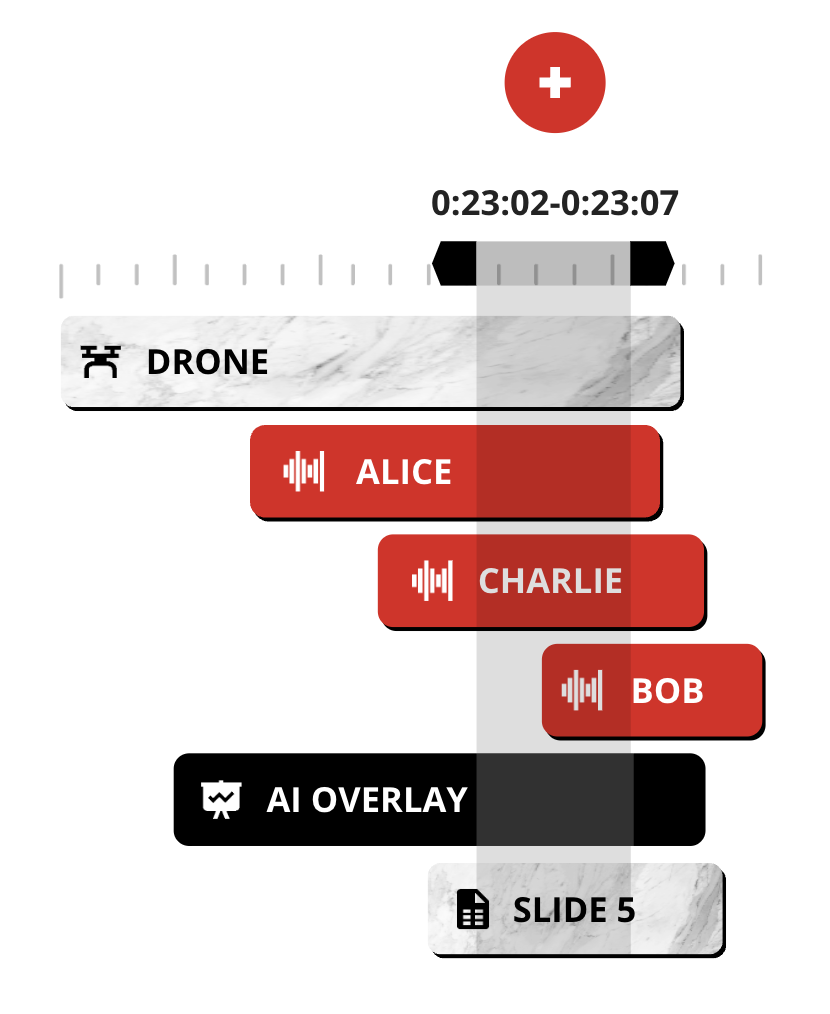

Business Scaling with a Strong Multiplier Effect
Kröpfl also sees great sales potential for his product: "Let's say a company builds call center software and uses Eyeson for it," he explains. "This company sells its product to numerous companies, all of which now use Eyeson. So we can exploit a strong multiplier effect." Eyeson wants to use this multiplier to scale its business over the next few years.
Eyeson will be a European pioneer and shake up this market.
And this market has rosy prospects. During the corona pandemic, many companies have had to move their operations to the digital world, from meetings to supervised workouts. The number of daily participants in Zoom meetings exploded from approximately 10 million at the end of December 2019 to over 300 million in April 2020.
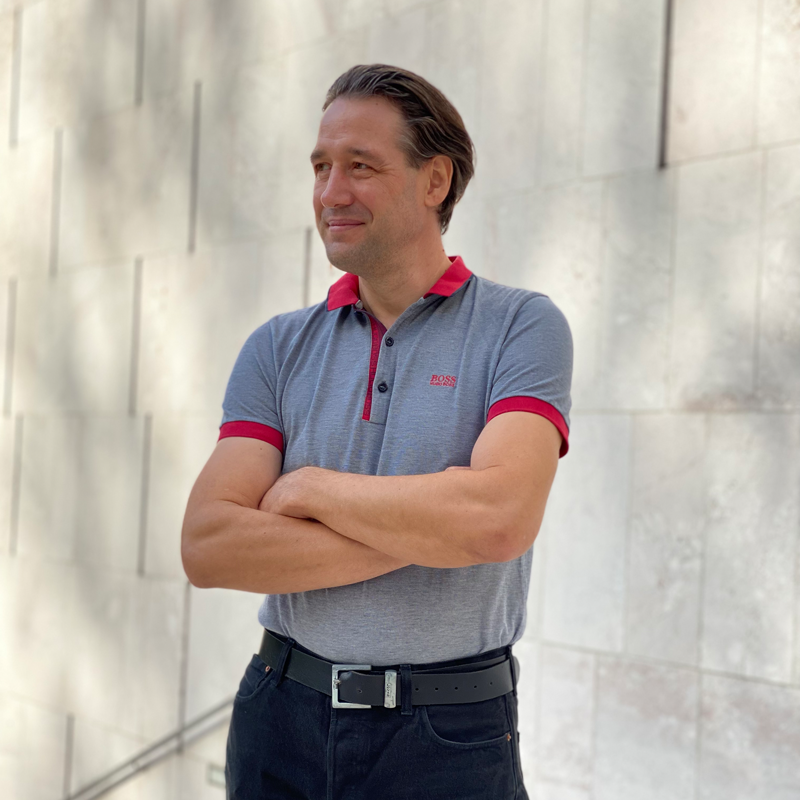
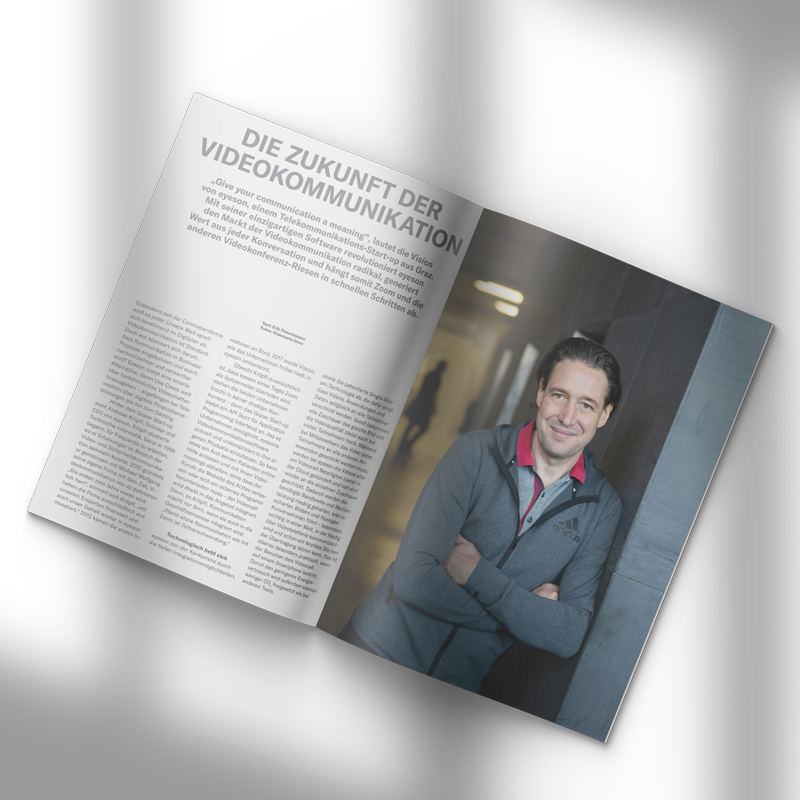
Generating Additional Value with Every Conversation
Today, many activities take place "offline" again, but for many, video calls have remained part of everyday life. The growth rate for the global video communications market is currently in the double-digit range. In the next few years, it is expected to swell to a value of 22 billion US dollars. But the market for video integration in web applications, into which Eyeson falls, looks even more promising: With a growth rate of more than 30%, it is expected to be worth almost $ 16 billion by 2026. Eyeson is therefore well positioned to exploit this potential and scale its business model.
Kröpfl compares Eyeson's future to the smart features of Apple's iPhone, which turned the smartphone market upside down in a similar way. "When you take photos with an iPhone, you have data and it's linked together. The iPhone creates memories, you can search for people, places or animals. You make sense of these images," he explains, before adding, "We want to do the same with video communication. At some point you will be able to search for 'Meeting with Andreas Kröpfl' and you will see the recordings of all meetings with me. In the recording, you can then search for specific slides that I shared at the time."
Pairing this vision with artificial intelligence opens further doors. For example, AI could analyze sales pitches and determine which type of conversation is most likely to lead to a successful sale. "This is how you generate added value with every conversation," enthuses Andreas Kröpfl. "This is how we want to give meaning to communication."
